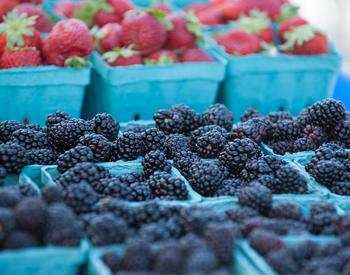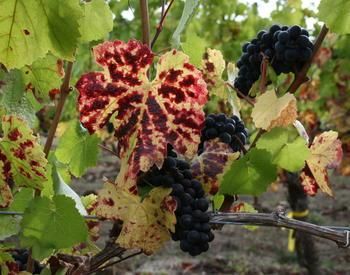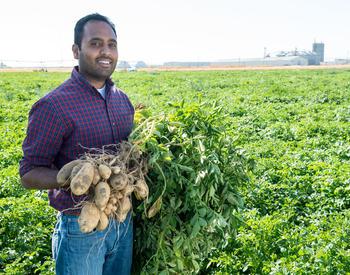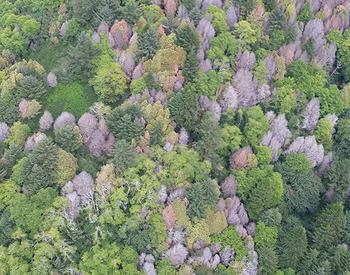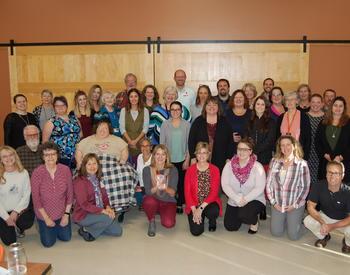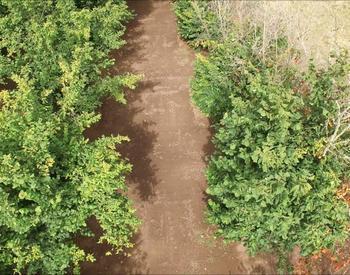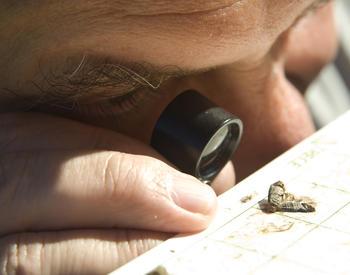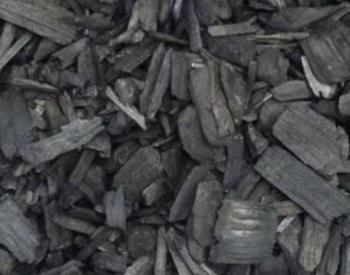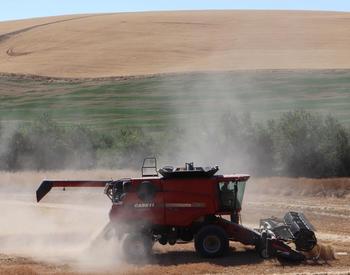Aspergillus fungus is an increasing concern to the Oregon hemp industry. This fungus belongs to the Aspergillus genus, contains over 300 species and occurs across the globe. Aspergillus, frequently found in various natural habitats and agricultural settings, is especially common in soil.
Only certain Aspergillus species produce mycotoxins known as aflatoxins, including A. flavus and A. parasiticus. Aflatoxins are poisonous to humans and animals, including birds, cats, cattle, dogs, sheep and swine. While some Aspergillus species, such as A. niger, are sources of beneficial metabolites (antibiotics and enzymes), they contain pathogenic strains that incite human, animal and plant diseases. Aspergillus infection in plants can ruin harvested crop portions and result in mycotoxin contamination.
Aspergillus affects a wide range of crop species. Important crops impacted by this fungus include corn, peanuts, cottonseed and tree nuts. This fungus has been found to infect industrial hemp in the U.S. Species of Aspergillus commonly associated with hemp are A. flavus, A. fumigatus, A. niger, and A. terreus. Environmental conditions that promote plant diseases incited by this fungus are variable and depend on the crop grown. Plant-pathogenic Aspergillus strains may be host-specific (Sweany et al. 2011) as well as saprophytic (able to grow and reproduce on dead or dying organic matter), and this versatility helps to ensure the perpetuation of the fungus.
Aspergillus biology
Aspergillus mainly produce asexual spores known as conidia and sclerotia (Figure 1) and sometimes produce sexual spores (ascospores) (Hornet al. 2014). Sclerotia are small (< 0.04 inch in diameter), durable, and have compact fungal mass mycelium (Figure 1) with a darkly pigmented outer layer. This layer protects the sclerotia from the detrimental effects of ultraviolet energy in sunlight. Sclerotia are formed in or on infected plant material or in association with saprophytic growth on dead organic matter. Sclerotia eventually end up in the soil as infected plant material decomposes in the field. Under conducive environmental conditions, sclerotia can activate and produce conidia or ascospores and result in pathogen spread.
In Canada, 34 different fungal species were recovered from harvested cannabis buds with discoloration, including A. flavus, A. niger, and A. ochraceus, which were recovered at relatively low levels (< 10%). In Oregon, Ocamb and Thomas (unpublished) found Aspergillus occurring at low levels in hemp seeds of some varieties when 100-seed samples were plated onto a Fusarium semi-selective medium (Figure 2; Table 1). When a larger prevalence of Aspergillus is found in association with harvested cannabis portions, it is likely that the greater presence developed post-harvest.
| % seeds | |||||
|---|---|---|---|---|---|
| Hemp Variety | No microbial growth (clean seed) | Confirmed Fusarium | Cladosporium and/or Penicillium | Aspergillus species | Other fungi |
| A | 98 | 0 | 1 | 0 | 1 |
| B | 18 | 0 | 29 | 1 | 52 |
| C | 80 | 0 | 6 | 0 | 14 |
| D | 36 | 4 | 10 | 4 | 46 |
| E | 11 | 1 | 7 | 1 | 80 |
Aflatoxins in Aspergillus
Four aflatoxin types produced by Aspergillus species are the most important: B1, B2, G1, and G2 (Shabeer et al. 2022). Among them, aflatoxin B1 has the greatest toxicity and is the most common aflatoxin type found in food. We can be exposed to aflatoxins by eating contaminated plants, meat or dairy products.
However, agricultural workers may be exposed to both aflatoxins and spores by inhaling dust generated while handling and processing contaminated crops (National Cancer Institute). Aflatoxins can contaminate crops before or after harvest, with disease continuing to spread in storage if environmental conditions are not well controlled during storage. The U.S. regulates corn, peanut and other crops for mycotoxins; the standard for aflatoxins is 20 parts per billion for human food and animal feed.
John Hughes Bennett first described Aspergillus growing in the lung tissue of humans in 1842 (Bueid 2012). Around 20 Aspergillus species have been confirmed to cause human infections, although around 95% of Aspergillus diseases in humans are caused by A. flavus, A. niger, and A. fumigatus. Infection routes include inhalation of airborne spores, exposure to contaminated water when bathing and exposure in hospital settings to contaminated hospital fabrics and plastics.
The incubation period after exposure before symptoms develop is two days to three months. Not everyone exposed to Aspergillus spores will develop the disease. Individuals with compromised or weakened immune systems are more prone to developing lung infections. However, humans and other animals are generally susceptible to the toxic effects of aflatoxin exposure. Intestinal bleeding, liver damage, death, cancer or a combination of these things may result after exposure.
In the 1960s, more than 100,000 young turkeys died in England from Turkey-X disease, which was later found to be due to peanut meal contaminated with aflatoxins that was fed to the young birds. In 2004, 125 people died of aflatoxin exposure in Kenya, and more than half of the maize samples from markets in the region had aflatoxin levels greater than 20 ppb (Lewis et al. 2005). In 2005, more than 75 dogs in the U.S. died due to pet food contaminated with aflatoxins, and hundreds more experienced severe liver problems. Again, in 2020, another outbreak of aflatoxin-contaminated pet food occurred, with more than 110 dogs dying after consuming affected pet food (American Veterinary Medical Association). Both times, there were national dog food recalls after batches of pet food were found to contain fatal levels of aflatoxins.
Potential mitigation strategies
Aspergillus are ubiquitous fungi and can thrive in all types of cannabis cultivation systems, whether indoors or outdoors.
Specifically, during the harvesting and storing processes:
- Discard insect- and pathogen-infested materials because these materials may contain Aspergillus and may promote pathogen growth.
- Choose the appropriate drying methods, such as a hot air drying method that provides uniform drying.
- Trim the flowers after the harvest (vs wet trimming) to reduce mold and pathogen risks.
- Don’t store unprocessed samples in an uncontrolled environment.
- Avoid using plastic materials for storing and packaging to reduce pathogen growth.
The introduction of Aspergillus spores into facilities can happen through various channels, including contaminated clones or seeds, inadequate hygiene and sanitation practices among employees, and failures in heating, ventilation, air conditioning and dehumidification systems. Effective mitigation largely hinges on adopting good agricultural and cleaning practices. Being acutely aware of the specifics of your growing environment enables the identification of potential risks and the implementation of appropriate strategies.
Good practices include:
- Employing air-purification techniques that lower the risk of mold proliferation. Incorporating high-efficiency particular air (HEPA) filtration and ultraviolet lighting in heating, ventilation and air-conditioning systems can be helpful. Regular maintenance and monitoring of air quality are important.
- Prompt and appropriate pruning. This pruning improves under-canopy airflow and discourages the creation of moisture-rich microenvironments that nurture mold development.
- Implementing appropriate sanitation practices. Utilize chemical sanitizers or UV light for facility and equipment sanitation. Handle cannabis on clean surfaces. Use personal protective equipment, such as masks and gloves, to reduce contamination risks.
- Monitor temperature and humidity levels during the postharvest phase.
Limited research has found that Y-ray can eliminate Aspergillus. Other promising decontamination alternatives include Electron Beam (E-beam) irradiation and X-rays, which function similarly to Y-rays but require further validation.
Cold plasma is a novel nonthermal decontamination approach in the food industry, which demonstrates a reduction in Aspergillus counts and aflatoxin levels. However, its impact on the chemical composition or texture of cannabis products necessitates further study.
Extensive research is required to assess the efficacy of these methods and their effects on the desired active chemical compounds portfolio.
Literature cited
- Bueid, A. 2012. Laboratory epidemiology and mechanisms of azole resistance in Aspergillus fumigatus. PhD. Dissertation. University of Manchester.
- Dhillon, G. S., S. Hukkeri, D. Nightingale and J. Callaway. 2022. Evaluation of different techniques to decontaminate medical cannabis and their effect on cannabinoid content. ACS Agricultural Science & Technology, 2(6), 1126-1133.
- Frink, S., O. Marjanovic, P. Tran, Y. Wang, W. Guo, N. Encarnacion, and G. Vrdoljak. 2022. Use of X-ray irradiation for inactivation of Aspergillus in cannabis flower. Plos one, 17(11), e0277649.
- Horn et al. 2014. Sexual reproduction in Aspergillus flavus sclerotia naturally produced in corn. Phytopathology 104:75-85. doi: 10.1094/PHYTO-05-13-0129-R
- Lewis, L., M. Onsongo, H. Njapau, et al. 2005. Aflatoxin contamination of commercial maize products during an outbreak of acute aflatoxicosis in eastern and central Kenya. Environmental Health Perspectives.113(12):1763-1767. doi:10.1289/ehp.7998
- Punja, Z. K. 2021. The diverse mycoflora present on dried cannabis (Cannabis sativa L., marijuana) inflorescences in commercial production. Canadian Journal of Plant Pathology. 43:88-100. DOI: 10.1080/07060661.2020.1758959
- Shabeer, S., S. Asad, A. Jamal and A. Ali. 2022. Aflatoxin contamination, its impact and management strategies: An updated review. Toxins (Basel) 14(5):307. DOI:10.3390/toxins14050307

